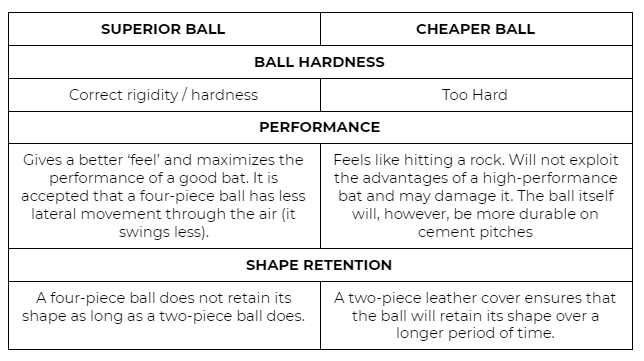

1. Choosing the Right Cricket Bat
Grading system

Entry-level: Any number of grains visible. Over half the wood is darker, may also have butterfly stains, but is very strong. Possibly more ‘speck’.
Good: At least four, not perfectly straight grains on face. Some small knots and/or small ‘butterfly’ stains and/or more prominent ‘speck’. Up to half of the bat may be darker, which is only cosmetic.
Superior: At least four straight grains on the bat’s face. May have some blemishes, pin knots or ‘speck’.Perhaps more red wood on edges, which is only cosmetic.
Excellent: Wood grain on the face is straight with at least four grains visible. May have some red wood on the edge and/or a small knot on the edge or back.
Elite: Wood grain on face is straight with at least four grains visible. Hardly any red wood on the edge and/or small knots on the edge or back.
Type
- English Willow: softer wood with better dampening properties, giving the batsman less vibration on impact and improved feel and control, enabling you to “pick the gaps” more accurately. The highest quality bats are made from English Willow and it has very good rebounding properties.
- Kashmir Willow: heavier, because the fibres are denser. It is less durable than English Willow because it is harder wood and tends to break more easily. However, it is cheaper than English Willow bats and usually requires less care.
Bat size
Make sure you select the correct size cricket bat for your height by means of an in-store chart or web size guide. Also, ensure the bat is not too heavy or too light for you and there is a smooth pick-up.
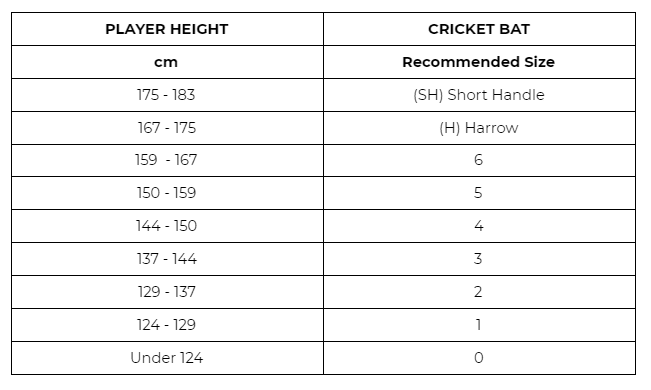
Bat Care
Knocking-In
All bats, even the ready-to-use models should be knocked-in first to improve performance and extend lifespan. Do this either with a mallet or with Sportsmans Warehouse professional knocking-in machine (a fee applies).
Toe Guards
These protect the bottom of the bat from damage and also prevent absorption of moisture and possible splitting.
Pick Up
Pick-up refers to how the bat feels relative to its actual weight on the back-lift of a swing.
Think of a sledgehammer that has its head on the ground and its handle sticking up in the air. You try to wield it like a cricket bat, but it feels uncomfortably heavy. Now imagine the same sledgehammer, but the hammerhead has been moved up the handle towards where you’re gripping it. It’s the same hammer with the same weight, but the back-lift is lighter. That, in a nutshell, is pick-up: the relative position of the thickest part of the bat a ects how it feels.
Pick-up at a glance (assuming bats of the same size)
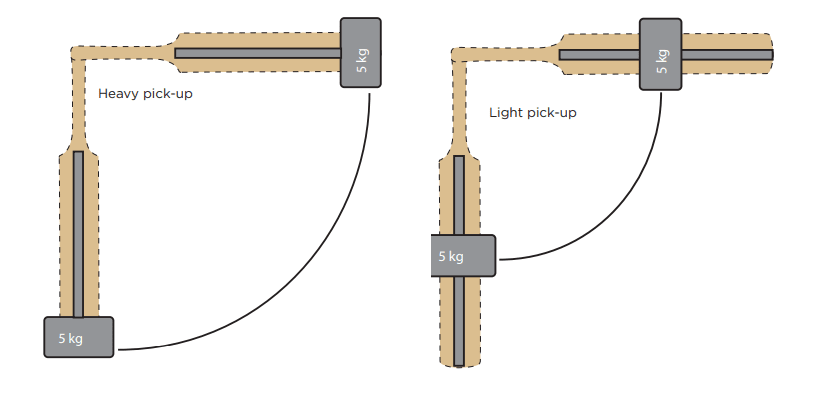
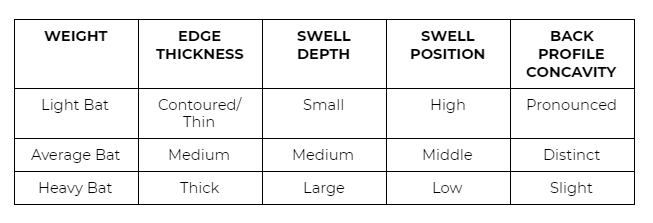
Bow
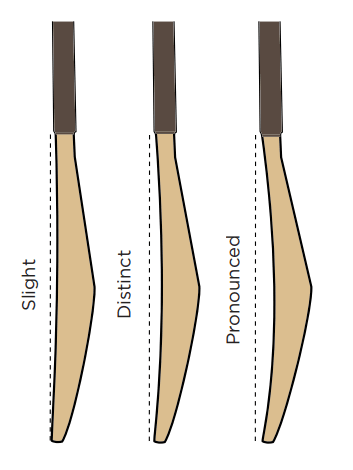
The degree of bow in a bat is a personal choice. Star international batsmen use bats with varying degrees of bow.
A noticeable bow:
- Acts as a counter-balance, raising the centre of gravity of the cricket bat, thereby assisting pick-up.
- Helps with control of strokes as the player’s hands are positioned more in front of the ball during contact.
- Acts like a scoop to produce more lofted (higher) shots which do, however, run the risk of being caught.
Edge Thickness
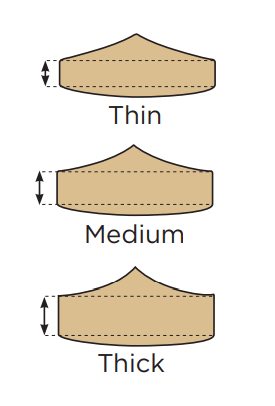
Thicker edges are more durable than thin edges, i.e. the bat’s edge is not easily damaged by inevitable miss-hits. However thick edges do shift the centre of gravity downwards, thus affecting pick-up.
Swell Depth
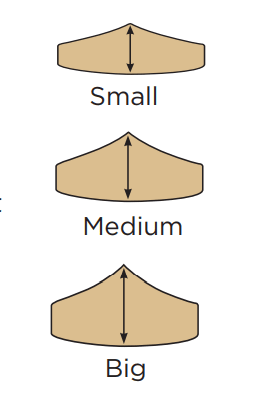
The thicker the swell depth, the better the rebounding qualities the bat has. In other words, a deeper swell helps to give the bat a larger sweet spot.
Swell Position
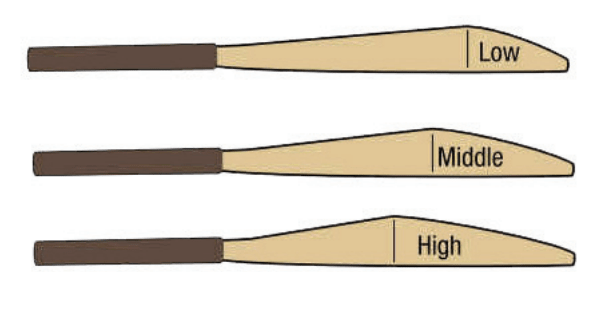
A lower swell position equates to heavier pick-up, where a higher swell position leads to a lighter pick-up.
Back Profile Concavity
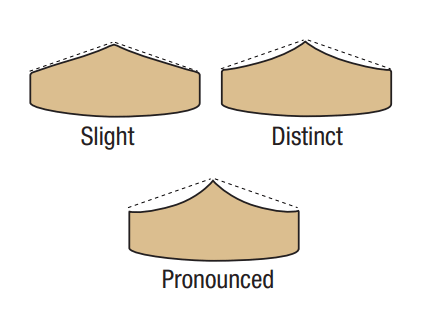
Bats with concave back profiles are those that have had wood cut out from either side of the bat’s spine. This is done to reduce the bat’s weight, thereby improving its pick-up. The weight loss enables the bat maker to design the bat with thicker edges and a deeper swell.
2. Choosing the Right Protective Gear
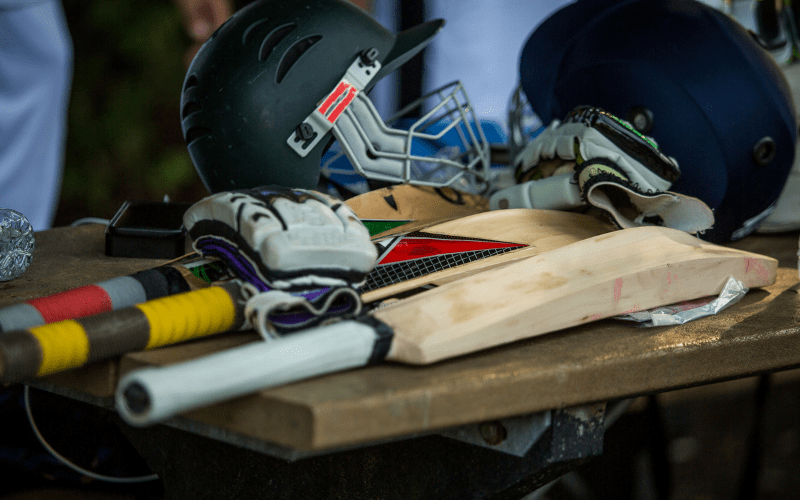
Pads
Protection Rating: Choose the protective wear that is rated for your level of play. Juniors use protective wear with lower ratings, while pros use top-rated protective gear.
Pad Technology: Modern protective wear is highly technical equipment that has been refined over many years. Refinements include stronger and lighter materials, breathability, improved cushioning and comfort, as well as enhanced durability and lifespan.
Ambidextrous: Some leg guards can be used on either leg, others require the batsman to select a set of leg guards depending on whether he is left- or right-handed.
Strap Thickness: In general, thinner straps are less comfortable, as they can dig into the batsman’s skin.
The Right Size Pads: In general, thinner straps are less comfortable, as they can dig into the batsman’s skin.
Gloves
Batting Gloves: When choosing batting gloves look for features such as degree of protection and comfort, flexibility, moisture-management, airflow and grip of palm.
The Right Size Gloves: Obtain an approximate idea by measuring from the start of the wrist to the tip of the longest finger, in a straight line.
Warning for Bowlers: When batting, ensure that you wear excellent quality gloves because serious injury to the fingers of the bowling hand can hamper the performance of a bowler and his team.
Note on Wicketkeeper’s Gloves: Do not wear too-large or too-small gloves as they will be uncomfortable and could lead to injury, due to the padding not being positioned over the correct areas of the hand
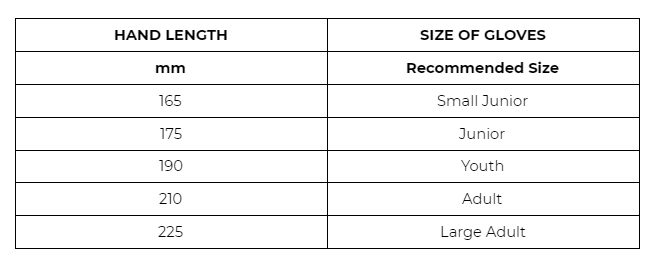
Care of Gloves:
- Gloves cannot be washed as this will damage the materials used
- Allow gloves to dry naturally, avoiding direct sunlight as this will cause the leather to crack
- Cotton inners can be worn to absorb sweat and keep the gloves clean inside.
Helmets
Advanced helmets offer:
- Ultra-lightweight design to prevent neck ache
- Moisture management lining
- A peak shape to give good peripheral vision
- Sufficient vents for adequate airflow that is especially important in warmer climates
- Comfortable and well-fitting chin straps
Other features to consider:
- Breathable comfort foam padding, sometimes with a removable forehead pad and an adjustable size band to closely customise the fit, prevent rocking and allow juniors to adjust the fit as they grow.
Choose a protection rating suitable for your level of play, but always bear in mind how important it is to safeguard your head against balls that can come at you at over 144 kilometres per hour.
Size of Helmet
A well-fitted helmet is worn with the peak protruding horizontally from the line of the eyebrows. It should feel firm and comfortable, with no excessive movement in any direction. Keep the chin strap fastened for comfort and security.
To assess your size, measure your head’s circumference from the middle of the forehead (just above the eyebrows), around the side (just above the ears) to the bulge at the back of the head. Over time, the internal padding will mold to the shape of the head.
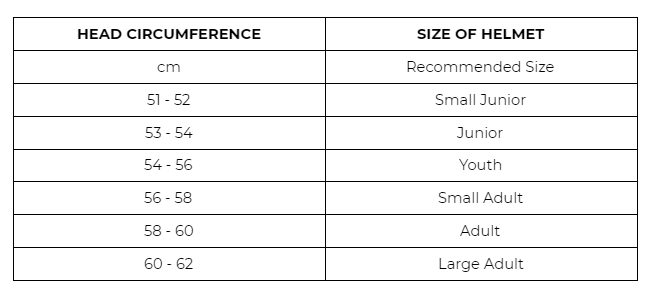
Balls
Structure
Traditional cricket balls consist of a core of cork and rubber, covered with layers of tightly wound string (which is normally made from wool) and small, flat strips of cork. This is covered by an outer leather case (of four or two pieces) with a slightly raised sewn seam where one hemisphere meets the other.
Four-piece balls, which give a better feel off the blade of the bat, are always used in test and provincial matches. Two-piece balls are usually more suitable for junior use and lower leagues.
Cheap balls, with a non-cork-rubber centre, can be too hard and tend to damage bats, particularly high-quality English willow bats.
Quality is Important
